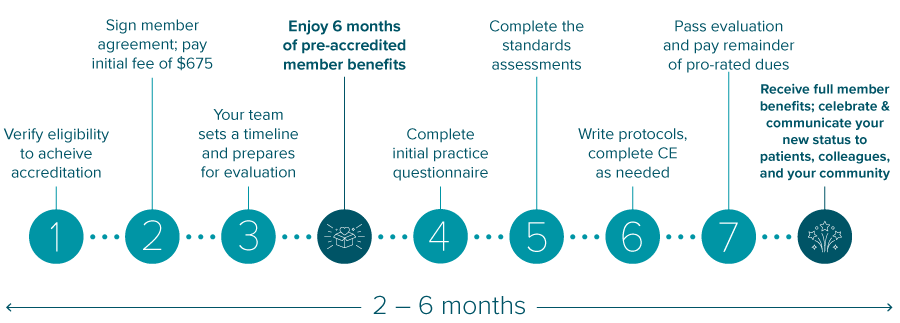The Evaluation: What to Expect
The American Animal Hospital Association (AAHA) simplifies your journey towards veterinary excellence by publishing standards encompassing all aspects of veterinary medicine—from pain management and patient care to team training and medical recordkeeping. AAHA's standards are continuously updated to keep accredited practice teams at the forefront of the profession.
Practices of all sizes and types voluntarily choose to meet these standards and become AAHA-Accredited members, because accreditation provides real business results and membership offers many valuable benefits.
AAHA Accreditation signifies that the practice has met or exceeded AAHA standards, the only standards for veterinary facilities in the United States and Canada. Learn why more than 4,500 practices have joined AAHA as an accredited practice, willingly striving to meet a higher standard of care for their patients and raising the bar for the entire profession.
Requirements
In order to become an accredited AAHA member, a veterinary practice must meet nearly 50 mandatory AAHA standards in addition to other applicable. Learn more about accreditation requirements.
What are AAHA standards?
AAHA’s standards were developed by experts in the field and encompass all aspects of veterinary medicine—from pain management and patient care to team training and medical recordkeeping. AAHA's standards are continuously updated to keep accredited practice teams at the forefront of the profession.
There are two types of AAHA standards: mandatory and points-based. There are nearly 50 mandatory standards accredited practices must meet or exceed. These standards cover basic but important best practices.
Examples of mandatory standards include:
"Anesthetic agents are administered by a veterinarian or trained practice team member under the supervision of a veterinarian on the premises."
"Pain assessment is considered part of every patient evaluation regardless of the presenting complaint."
Points-based standards are grouped into five categories:
- Quality of care
- Management
- Medical records
- Facility
- Diagnostics and pharmacy
Practices choose which of the non-mandatory standards that best fit their practice type and philosophy in each of these five areas and must meet pre-determined points levels to pass their evaluation.
Learn more about the accreditation process.




